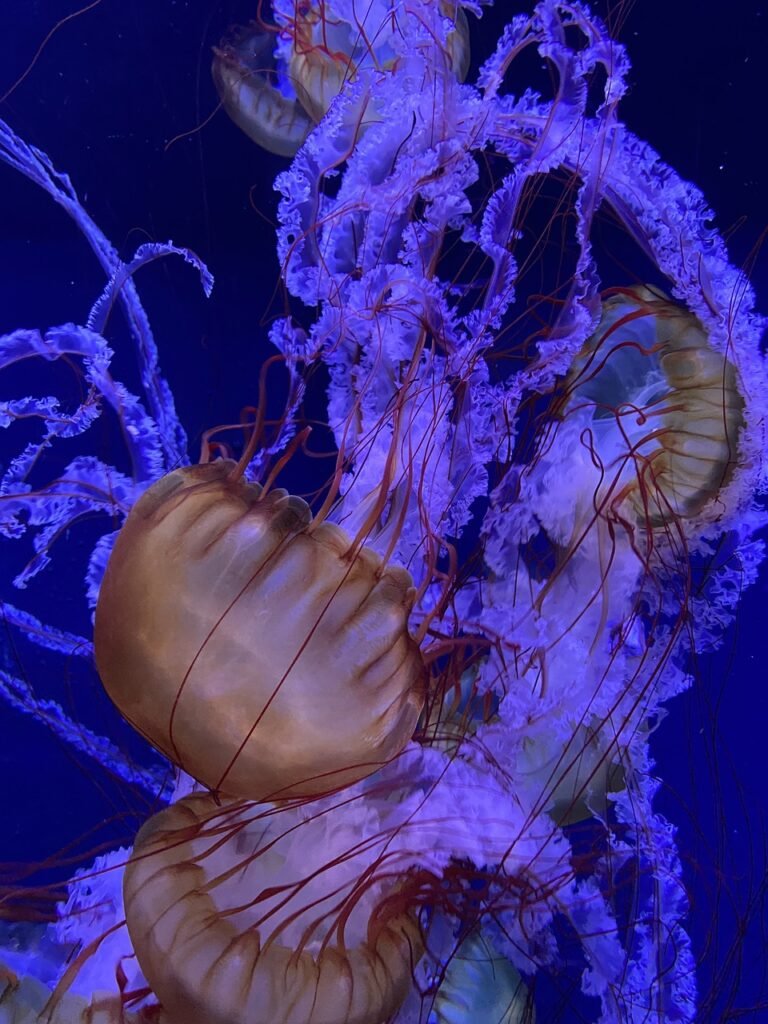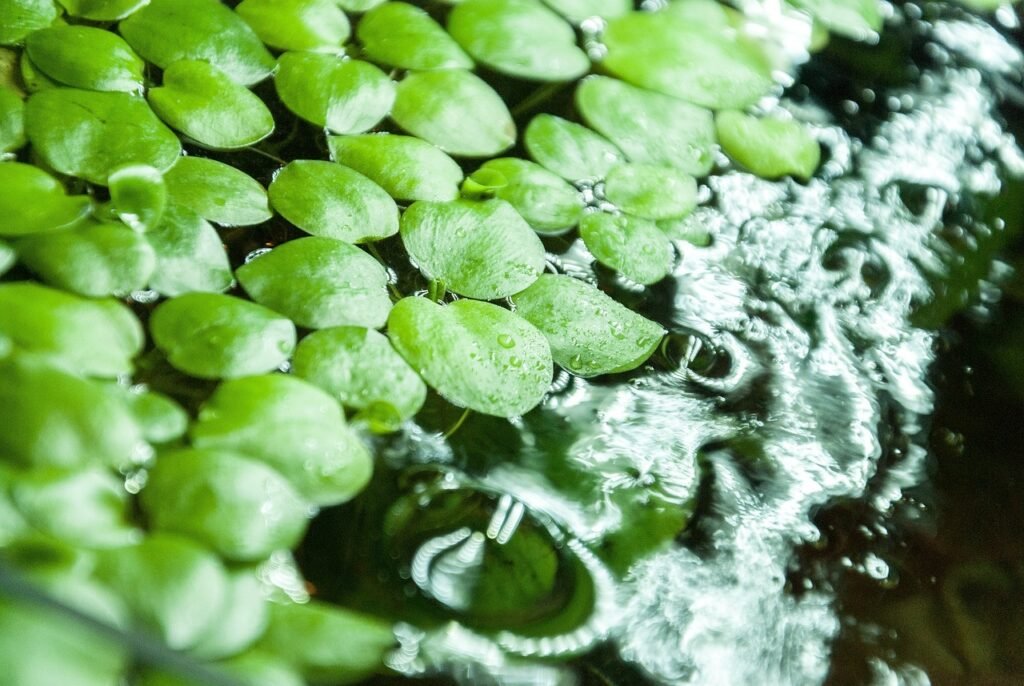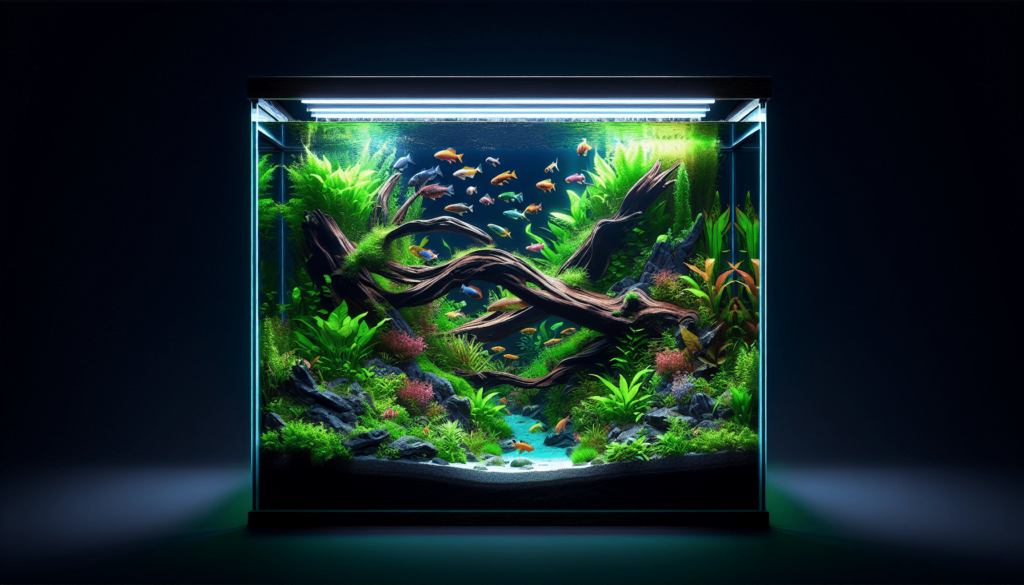Imagine turning a small 10-gallon aquarium into a magical underwater world where plants and fish live together happily. In “Essential Tips for Thriving Aquascaping in a 10 Gallon Aquarium,” you will learn how to create a beautiful and healthy home for your aquatic friends. We’ll explore the most important steps, like choosing the right plants and arranging them in ways that look nice and help them grow. Whether you’re just starting or looking to improve your skills, these tips will make your aquarium a lively, thriving place you’ll be proud to show off! Have you ever wondered what it would be like to create a beautiful underwater garden right in your own home? Imagine a small piece of nature inside a glass box where fish swim around and plants grow lush and green. This is called aquascaping! And today, we’re going to talk about how you can create a thriving aquascape in a small 10-gallon aquarium.

Introduction to Aquascaping: Dive into the World of Water Gardens
Aquascaping is like gardening underwater. Instead of soil and flowers, you use gravel, sand, rocks, and special water plants. This activity is not only fun but also helps you learn a lot about nature and how ecosystems work. It’s relevant today because creating a small, thriving water garden can help reduce stress and provide a beautiful focal point in your living space.
Why Choose a 10-Gallon Aquarium?
A 10-gallon aquarium is just the right size for beginners. It’s not too big, so it’s easier to take care of, but it’s also not too small, giving you enough space to create a lovely underwater scene. This makes it perfect for anyone wanting to dip their toes into the world of aquascaping.
The Main Goal: A Healthy, Thriving Aquascape
The main goal here is to help you make a small aquarium that looks amazing and is also healthy for the fish and plants living in it. By following these tips and steps, you’ll be able to create a small underwater paradise.
A Quick History of Aquascaping
Aquascaping has been around for quite a long time. It started in Japan where people would create miniature versions of natural landscapes called “Iwabi”. This practice is all about balancing plants, rocks, and water to create a peaceful and harmonious scene. Over time, aquascaping has spread all over the world, and now people from all different countries enjoy making their own beautiful water gardens.
Historical Elements in Modern Aquascaping
Today’s aquascaping combines these ancient Japanese techniques with modern technology. Now we have better equipment, more plant varieties, and lots of information to help us create stunning underwater scenes.
Trends in Aquascaping Today
Recently, there have been some trends in aquascaping that have caught many people’s interests. Some of these include the use of LED lighting to bring out the colors of plants and fish, nano tanks for small spaces, and the practice of creating biotopes – aquariums that replicate specific natural environments.
LED Lighting: A New Way to Shine
LED lights are great because they use less energy and can be adjusted to show many different colors. This makes your aquascape look vibrant and can even help your plants grow better.
Nano Tanks: Small but Mighty
Nano tanks are small aquariums, usually less than 10 gallons. They are perfect for people who don’t have a lot of space but still want to enjoy aquascaping. Though small, they can be just as beautiful as larger tanks.
Biotopes: Nature in a Box
A biotope is a type of aquarium that mimics a specific place in nature. For example, you could create a tank that looks just like a part of the Amazon River, with plants and fish that live there. This helps you learn about different ecosystems while creating an amazing display.
Key Concepts and Definitions in Aquascaping
Before we dive into the details of creating your 10-gallon aquascape, let’s go over some important terms and concepts.
Substrate: The Foundation of Your Aquascape
The substrate is what you put on the bottom of your tank. It can be gravel, sand, or special aquascaping soil. It provides a place for plants to root and helps create the look you want.
Hardscape: The Structure of Your Scene
Hardscape refers to the non-living elements in your tank, like rocks, stones, and driftwood. These elements give your aquascape its shape and form.
Livestock: The Fish and Critters
Livestock includes the fish, shrimp, and other animals in your aquarium. They add movement and color to your tank.
Plants: The Greenery
Aquatic plants are the stars of your aquascape. They come in many shapes, sizes, and colors, from tiny mosses to large leafy plants.

How to Create Your 10-Gallon Aquascape
Now that you know the basics, let’s get started on creating your very own 10-gallon aquascape!
Step 1: Picking the Right Equipment
First, you’ll need the right equipment. Here’s a little table to help you gather what you need:
| Equipment | Description |
|---|---|
| 10-Gallon Aquarium | The tank that will hold your aquascape. |
| Filter | Keeps the water clean and clear. |
| Heater | Maintains the right water temperature. |
| LED Light | Provides light for your plants and fish. |
| Substrate | Gravel, sand, or soil for the tank bottom. |
| CO2 System | (Optional) Helps your plants grow lush. |
| Water Conditioner | Makes tap water safe for fish and plants. |
Getting the right equipment is important because it keeps your plants and fish healthy. Make sure to choose a reliable filter and a heater, as they will help maintain the right conditions in your tank.
Step 2: Setting Up the Tank
With your equipment ready, it’s time to set up your tank. Follow these steps:
- Place Your Tank: Find a stable, level surface away from direct sunlight and vents.
- Add the Substrate: Spread a 2-3 inch layer of substrate on the bottom of the tank.
- Install the Equipment: Set up the filter, heater, and LED light according to the instructions.
- Add Water: Fill the tank with water. Use a water conditioner to make it safe.
- Cycle the Tank: Let the tank run for a week to establish good bacteria. This is called cycling.
Step 3: Designing Your Hardscape
Now comes the fun part – designing your hardscape! Think about the look you want to achieve. Do you want a mountain scene, a forest, or a riverbed? Arrange your rocks, stones, and driftwood to create a natural-looking landscape.
Step 4: Planting Your Aquarium
Next, it’s time to add the plants. Here are a few popular choices for a 10-gallon tank:
| Plant Type | Description |
|---|---|
| Java Fern | Easy to grow, perfect for beginners. |
| Anubias Nana | Small and hardy, great for small tanks. |
| Dwarf Hairgrass | Creates a grassy carpet at the bottom. |
| Amazon Sword | Larger plant for the background. |
| Moss (Java Moss) | Easy to attach to rocks and driftwood. |
Planting your tank is like planting a garden. Place taller plants at the back and shorter ones at the front. Use tweezers to carefully plant them in the substrate.
Step 5: Adding the Fish and Critters
Once your plants are settled, you can add fish. For a 10-gallon tank, choose small fish like:
| Fish Type | Description |
|---|---|
| Betta Fish | Colorful and easy to care for. |
| Neon Tetras | Bright and active, great for small tanks. |
| Cherry Shrimp | Adds color and helps clean the tank. |
| Corydoras Catfish | Small bottom-dwellers that keep substrate clean. |
Add fish slowly, starting with just a few. Give them a chance to get used to their new home before you add more.
Taking Care of Your Aquascape
Creating your aquascape is just the beginning. To keep it thriving, you’ll need to take good care of it.
Feeding the Fish and Plants
Feed your fish once or twice a day, only as much as they can eat in a few minutes. Overfeeding can make the water dirty. Plants need nutrients too. Use liquid fertilizers or root tabs to keep them healthy.
Maintenance Tips
Regular maintenance is key to a healthy tank. Here are some tips:
- Weekly Water Changes: Change 10-20% of the water each week.
- Clean the Filter: Rinse filter media in tank water to avoid killing beneficial bacteria.
- Trim the Plants: Keep plants trimmed to promote growth and prevent overgrowth.
- Check Water Parameters: Regularly test water for pH, ammonia, nitrate, and nitrite levels.

Different Approaches to Aquascaping
There are many ways to create a lovely aquascape. Let’s explore two popular styles.
Example 1: The Nature Aquarium Style
This style was popularized by Takashi Amano, a famous aquascaper. It focuses on creating a natural look using stones, driftwood, and plants that mimic nature.
Case Study: One famous nature aquarium is the Ryuboku Style. It uses driftwood to create the appearance of tree roots or branches in the water. Imagine a little underwater forest with fish swimming through the “trees”.
Example 2: The Dutch Style
The Dutch style is like a garden, with lots of different plants arranged in rows or groups. It focuses on colors and textures to create a vibrant, lush look.
Case Study: A beautiful example of a Dutch aquarium features rows of red and green plants, creating a striking contrast. The plants are arranged in a way that they grow up and out, giving the tank a full, overflowing look.
Comparing Different Aquascaping Styles
While the Nature Aquarium style aims to look like a small piece of nature, the Dutch style is more like a carefully tended garden. Both are beautiful in their own way, and the choice depends on your preference.
Impact on the Aquarium Community
Both styles have had a big impact on the aquarium community. The Nature Aquarium style inspired people to think about how to create natural-looking tanks, while the Dutch style showed how planting different species together can make a colorful display.

Future of Aquascaping: What’s Next?
Aquascaping is always evolving, with new trends and techniques emerging. Here are some predictions and implications for the future.
Prediction: More Advanced Technology
Aquariums might have more advanced technology like smart filters and automated plant care systems, making it easier for beginners to create and maintain a thriving aquascape.
Implications for Home Decor
As more people live in smaller spaces, nano and biotope tanks could become popular decor choices. These small aquariums add a touch of nature to any room, making them both beautiful and functional.
Conclusion: Creating Your Own Underwater Paradise
In this article, we explored how to create a thriving aquascape in a 10-gallon aquarium. We’ve covered the history of aquascaping, current trends, and key concepts to help you understand this exciting hobby. Remember:
- Start with the right equipment.
- Use your creativity for hardscaping and planting.
- Take good care of your tank with regular maintenance.
Creating your own underwater paradise can be a fun and rewarding experience. So, are you ready to dive in and start your 10-gallon aquascape? Share your progress, ask questions, and join communities to learn even more about this fantastic hobby.
Engagement: Share Your Journey!
We’d love to hear about your aquascaping journey! Share your progress, ask questions, or give tips to fellow enthusiasts in the comments. Happy aquascaping!

Credible Sources
- Amano, Takashi. Nature Aquarium World: Book 1. TFH Publications, 1996.
- “Aquascaping: The Art of Underwater Gardening,” Aquascaping Love, 2023. Link.
- Walstad, Diana L. Ecology of the Planted Aquarium. Echinodorus Publishing, 2003.
- “Creating a Biotope Aquarium,” Aquatic Community. Link.
- “LED Lights for Aquariums,” Aquarium Adviser. Link.
By understanding the basics and putting a bit of passion into it, you can successfully create an amazing underwater scene that will bring joy and beauty to your home. Happy aquascaping!



